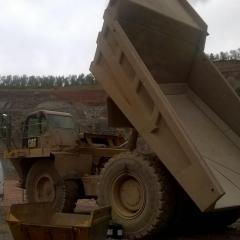Pristine CTD. Extra cab, short bed, 2wd, SLT. Factory tow/haul package, leather heated seats, heavy insulation package. Rebuilt HX 35/40, Dap injectors, full gauges, PacBrake, Dynamic Transmission vb/servos/accumulator/strut/band/triple disc. Soft tranny lines, 40k trans cooler, lift pump, gooseneck hitch (never used), class 5 tow hitch, tonneau cover, air bags, re- geared to 3.73’s, 3rd Gen brakes with 17" rims Rust free CA truck located in Chico CA, 100 miles north of Sacto. I built this to
-
Price: 16000
-
Location: Chico CA 95973
 wil440 5 posts
wil440 5 posts YeaImDylan 4 posts
YeaImDylan 4 posts jlwelding 3 posts
jlwelding 3 posts Mopar1973Man 1 post
Mopar1973Man 1 post

Hey all, back again! lol
So, I got my DAP 150's in and there seems to be yet another issue. Truck sat for a few weeks and then I got to doing the injectors and changed the oil and filter (had a lot of fuel in the oil). Put 3 gallons in, got the truck started (checked oil level before, was above operating range) and truck drove and ran great with the new injectors. Was getting about 60-70 PSI cold and once she was warm she was at about 40, but then she went to about 35-38 while cruising at 60. At the stop light, It was right above the lower limit line on the dash gauge. Got to my destination ASAP and shut her down. Looked for major leaks or anything and didn't see anything going on. I went and ate and then came back after an hour and checked oil level and it seemed to be below the point on the dip stick... I'm planning to get a mechanical gauge and fill it up til I'm in operating range and then start it up, get it warm, etc and monitor it. One of my friend's believes that it sitting for a few weeks drained the head, galleys, etc and I got more oil out than usual and then put the 3 gallons in. I also spilled some off the head because I put the new oil in with the VC off and didn't realize some was going over the edge I don't believe I let 2+ quarts go over though. I'm afraid maybe running a few miles with fuel in the oil ruined my bearings or maybe ruined the seal on the turbo. Planning to check for oil in the downpipe here too.
I don't believe I let 2+ quarts go over though. I'm afraid maybe running a few miles with fuel in the oil ruined my bearings or maybe ruined the seal on the turbo. Planning to check for oil in the downpipe here too.
If any clarification is needed after this ramble, please don't hesitate to ask!
Thank you,
Dylan